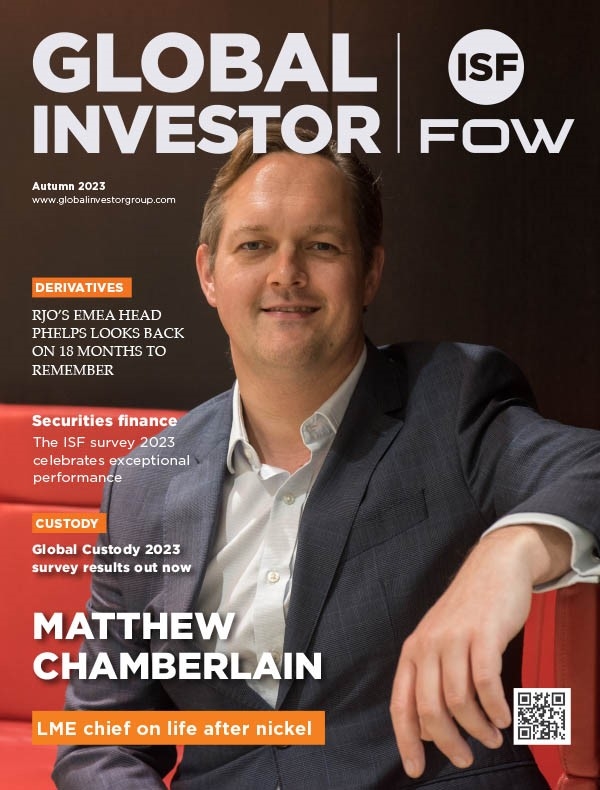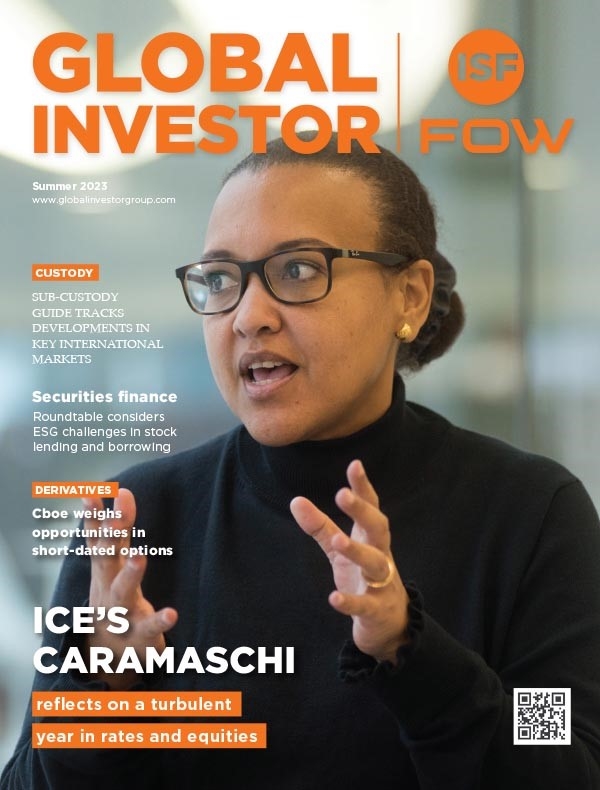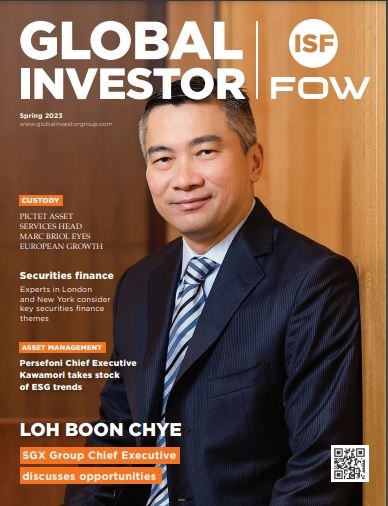BNY Mellon: Being Dominick Falco

Credit risk or liquidity risk and never the twain shall meet – many in the derivatives market would argue this is the unresolvable equation spawned by requirements of various new derivatives regulations. Yet it is an equation that Falco is determined to resolve.
In simple terms, the new requirements are designed to not only offset credit risk by upping the amount of segregated capital in the system but also impact liquidity by sucking the more liquid cash and assets out of what is an already constrained system.
This dynamic increases the cost of the over-the-counter (OTC) derivatives and other synthetic transactions that many asset managers use to hedge/offset a range of portfolio risks. Falco’s task: find solutions in a fluid environment that provide collateral segregation while enabling liquidity to still flow through the system.
The operational complexities to meet the regulatory transition – to be implemented in phases from 2016-2020 - are vast. Major pension funds and asset managers may need to accommodate pre- and post-threshold non-cleared derivatives and central clearing counterparties (CCP)-cleared derivatives into one risk management framework.
Regulatory opportunity
Yet where others feel regulatory headache, Falco sees opportunity. “We have a growing number of enquiries from clients and are trying to build a global product that works in multiple jurisdictions. Additionally, we stay very close to the regulation and look to shape our products based on the likely outcome of ongoing negotiations between the industry and the regulators.”
After the financial meltdown of 2008, the G20 decided that standard OTC derivative contracts must now be cleared through CCPs and many transactions that previously had no collateral requirements now do. Furthermore, the posting of initial margin (IM) was mandated.
The rules for non-standard derivatives are more complicated. In 2011, the G20 announced that non-standard OTC derivatives should be subject to bilateral margin requirements. In September 2013 the Basel Committee and IOSCO published the framework for minimum standards on margin requirements for non-CCP cleared derivatives.
This was then reframed into draft regulatory technical standards, primarily by ESMA in Europe and proposed rules by the Prudential Regulators and the Commodity Futures Trading Commission (CFTC) in the US.
As of the date of publication, Basel Committee on Banking Supervision (BCBS) is proposing an initial implementation date for all the regulations of September 2016. Variation margin (VM) and IM are proposed to be phased in differently.
The bilateral exchange of VM is proposed to become effective for those with the greatest derivatives exposure in September 2016, while those with lesser derivatives exposure would need to comply by March 2017. The same proposed start date applies for IM, but only for major participants (defined as those with a group-wide uncleared OTC derivative exposure of €3 trillion).
With a deep CV in collateral management (see below), Falco is concentrating on adapting his products to the new margining requirements. This task is made more complicated by the lack of standardisation across regions and regulators.
“One of the biggest issues is the acceptability of cash and what counts as cash,” says Falco. For example, in the US both the banking regulators and the CFTC are proposing that only cash can be used for VM whereas ESMA proposals for Europe allow for a range of eligible collateral including cash, bonds and equity.
Conversely, although all regulatory regimes allow a broad range of securities for IM – with applicable haircuts ranging from 0.5- 1% for short term government and corporate bonds to 15-25% for some equities - in the US and Japan cash can be a pledged asset (under Japanese law CSA, cash is title transfer, not pledged), whereas the acceptability of pledging cash in Europe is unclear at this time.
“We are programming to take cash in a variety of systems,” says Falco “yet cash cannot be segregated on a bank’s balance sheet, so while two parties that need to collateralise an exposure can segregate cash from each other at a third party custodian, like BNY Mellon, both parties still face the credit risk of the bank”.
Additionally, with Basel III looming, banks are not going to want cash on their balance sheets, so “costs will go up dramatically for usage of cash,” adds Falco.
New forms of collateral
With cash and G7 sovereign bonds, traditionally the major sources of collateral for the buyside, unlikely to be in enough supply to meet the new collateral demands (sovereign bonds because of quantitative easing and cash because of cost) “we need to bring cash into the system in a different form,” says Falco.
“As regulations become clearer it is likely the way you collateralise will change. In VM the parties may not want to exchange cash but use securities. We will likely see more securities as collateral and although the buyside has favoured cash as collateral, requests are changing for the types of collateral transaction.”
Perhaps the biggest hurdle thrown up by the new regulations will be the lack of standardised margin models across the various OTC regimes. The regulators themselves concede the need for more harmonisation.
CCPs in the exchange-traded environment have tended to calculate IM on the basis of asset price volatility (both historical and implied). VM is an easier mark-to-market P&L adjustment. Consequently, any standardised margin model for IM in non-cleared OTCs could face the challenge of finding consistent reference price histories, particularly for more obscure assets.
But standardised margin models for the OTC component will not necessarily be viable for the risk management needs of more complex portfolios.
Large, multiasset pension funds, for example, tend to use more complex and exotic OTC derivatives to de-risk their portfolios, and many clients will require “proprietary solutions to analyse their models”, says Falco.
Some end-users are already taking what steps they can to reduce overall risk exposure by compressing their OTC portfolios – in effect matching long and short contracts with similar characteristics and closing out the equal and opposite fractions.
This is happening both bilaterally and multi-laterally and is likely to increase as Basel III and more stringent capital ratios approach.
While compression will reduce gross exposure, it is not a total solution. Participants will still need a suite of systems in place to manage the resulting net exposure and compression is very difficult, verging on impossible, to apply to the complex end of the OTC business.
With margining and segregation in the OTC sector soon to be a must rather than an option, and a must that many asset managers may be unprepared for given the tendency to take a holistic approach to risk management, Falco is confident of finding ways of bridging the gap between liquidity and segregated collateral regulation via the use of new types of collateral.
But, he concedes, the job would be a whole lot easier if collateral regimes across the globe could be standardised and if the final regulations across all regimes were finalised as soon as possible, thus giving the industry the foundation and time to make the transition and plan for the new regulations.
| Dominick Falco officially started his new role as global head of segregation at BNY Mellon on September 1, 2015. The new global business has teams in Europe, the US and Asia. Prior to his new role Falco was Managing Director and head of Global Collateral Services for Asia-Pacific at BNY Mellon. Falco also served as CEO and president at The Bank of New York Mellon Trust (Japan) Limited and head of Broker- Dealer Services for Asia-Pacific at BNY Mellon since August 14, 2007. Falco joined BNY Mellon in 2007. He was responsible for managing its growing broker-dealer servicing business in the Asia-Pacific region and raising the visibility of its collateral and trust services, global collateral management, derivatives margin management and international clearance products. Falco is also one of the founding members of the Pan Asian Securities Lending Association (PASLA), serving as Chairman for two years and a Member of Executive Board. Falco has done extensive consulting work for The Asia Securities Industry and Financial Markets Association and PASLA. |
Found this useful?
Take a complimentary trial of the FOW Marketing Intelligence Platform – the comprehensive source of news and analysis across the buy- and sell- side.
Gain access to:
- A single source of in-depth news, insight and analysis across Asset Management, Securities Finance, Custody, Fund Services and Derivatives
- Our interactive database, optimized to enable you to summarise data and build graphs outlining market activity
- Exclusive whitepapers, supplements and industry analysis curated and published by Futures & Options World
- Breaking news, daily and weekly alerts on the markets most relevant to you



